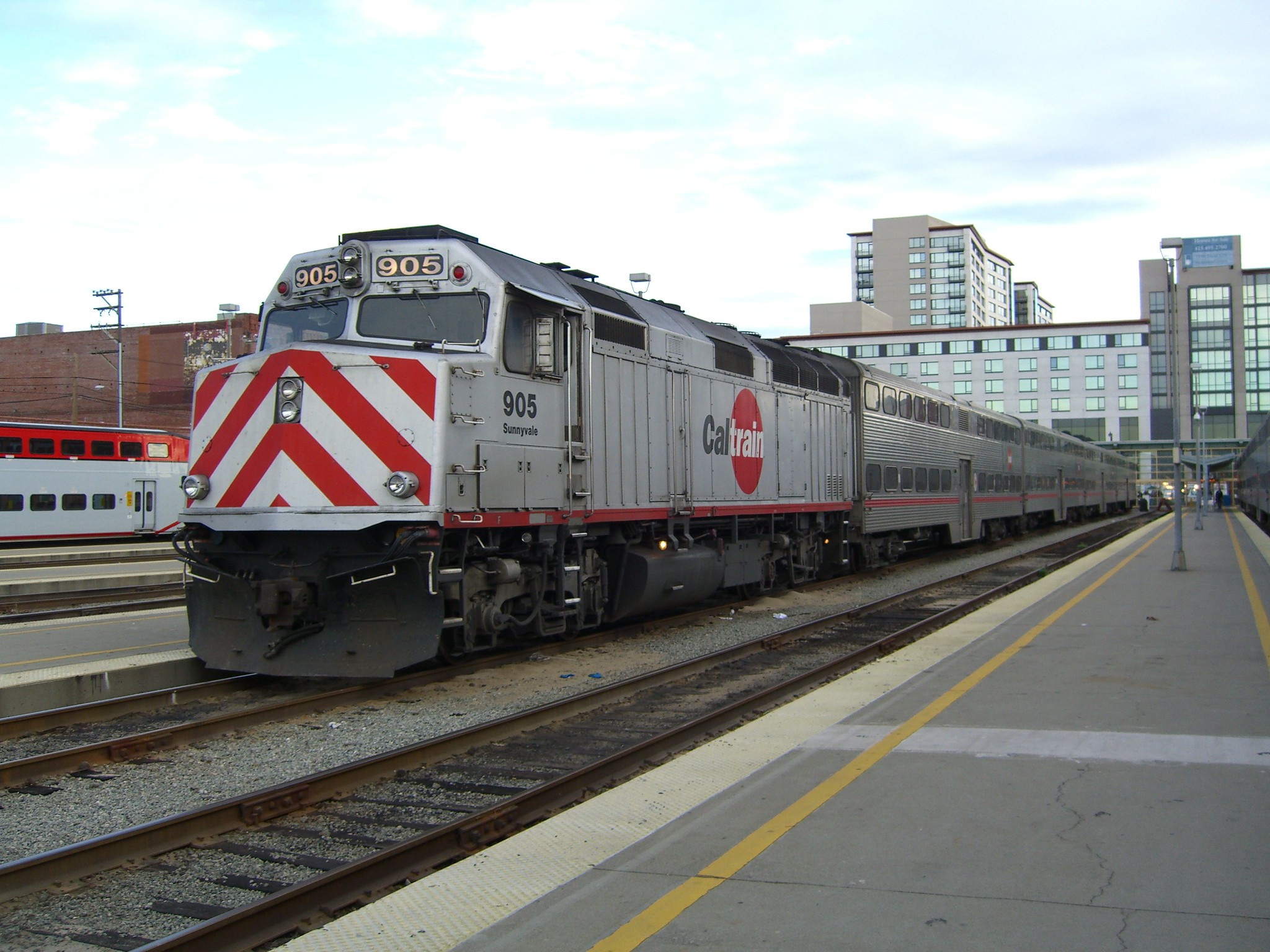Could COVID-19 Finally be the Superblock’s U.S. Moment?
12:38 AM EST on November 13, 2020
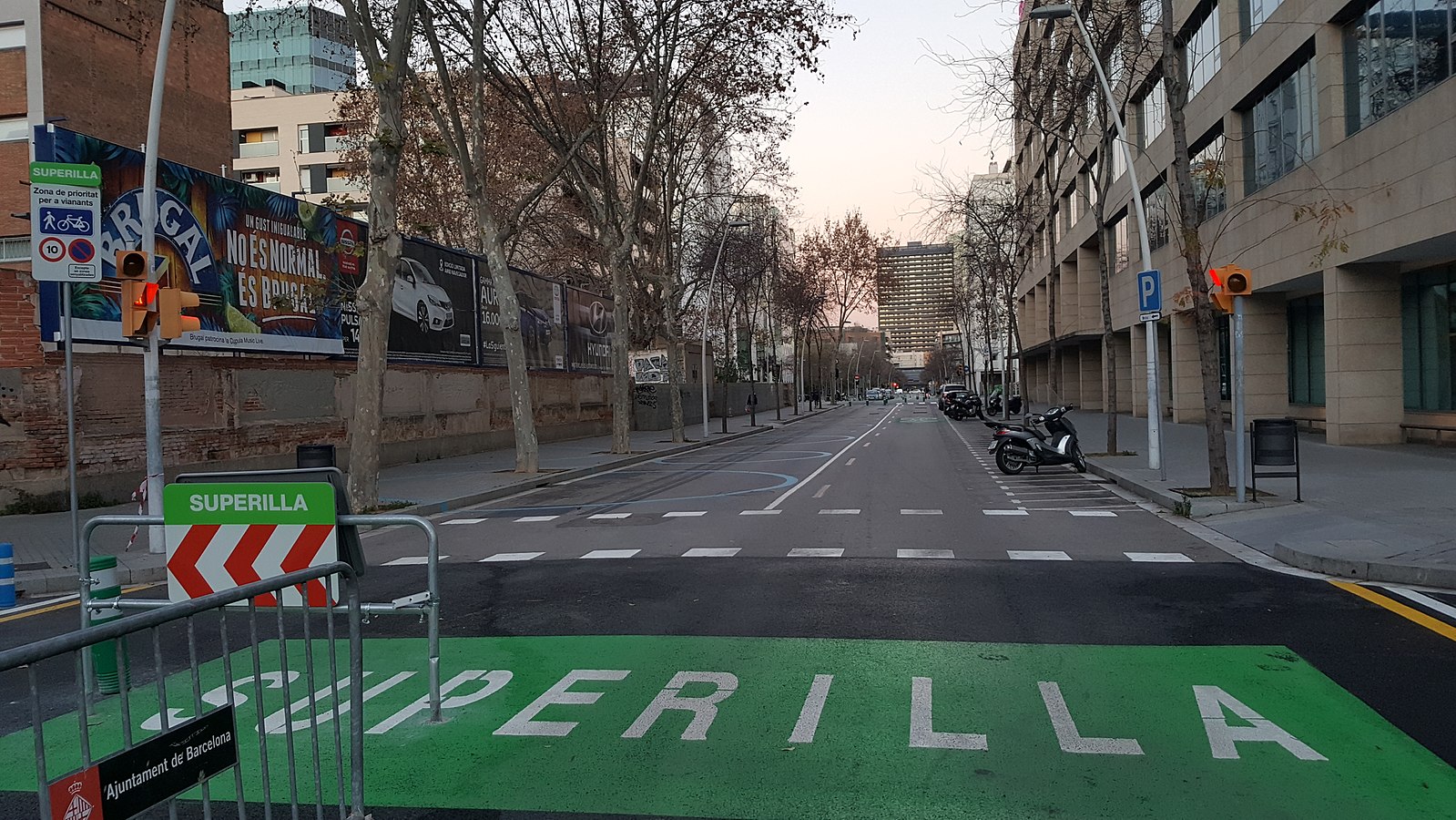
The entrance to a Barcelona superblock, or “superilla” in Catalan. Source: Creative Commons
Barcelona will radically and permanently expand its famous "superblock" program — and some experts hope U.S. cities could be next.
The Spanish city became synonymous with the buzzy urban planning concept in 2016 when it instituted six small "superblocks" throughout the region in an effort to curb the city's climbing carbon emissions. A "superblock," is when a local government designates a section of contiguous city blocks as a "car-light" zone, limiting fast automobile traffic to the perimeter of the zone with sawhorses or more permanent road design features and banning thru-traffic to drivers that don't absolutely need to be there (think: deliveries that can't be made by cargo bike, emergency services vehicles, people with qualifying disabilities, and residents who need access to their homes.)
And within the bounds of the superblock, cities invest in making neighborhoods truly great for non-drivers, piling on the micro-parks, sidewalk cafes, bike lanes, and people-centered public art throughout the grid. Speed limits for the few cars who dare to enter these pedestrian paradises are set as low as possible, and reinforced at every turn by traffic-calming road design.
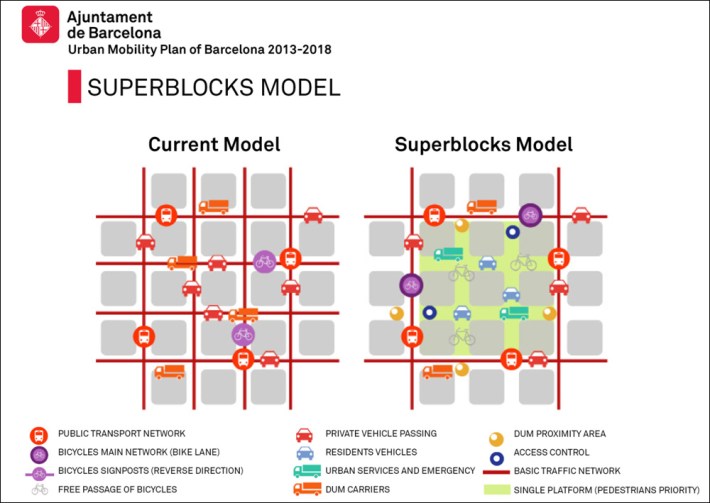
Now Barcelona is investing in a giant superblock — really, a megablock — spanning the entirely of the Eixample District, which covers a three-square-mile area in the city's modern downtown. In addition to restricting most drivers to the perimeter of the region, the project will also transform one in three streets within the new superblock into "green zones" that will put an asphalt-cooling micro-parks within a 500-meter (0.12-mile) walk of every resident in the area.
And if the previous superblocks are any indication, even those modest changes could have big benefits. After the initial program was rolled out in 2016, car traffic citywide decreased 12 percent, the number of unique cyclists on the road spiked 25 percent, and public transportation usage increased by 9 percent — three phenomena which collectively decreased congestion, car crashes and emissions, not to mention increasing the lifespan of the average Barcelona resident by an average of 200 days.
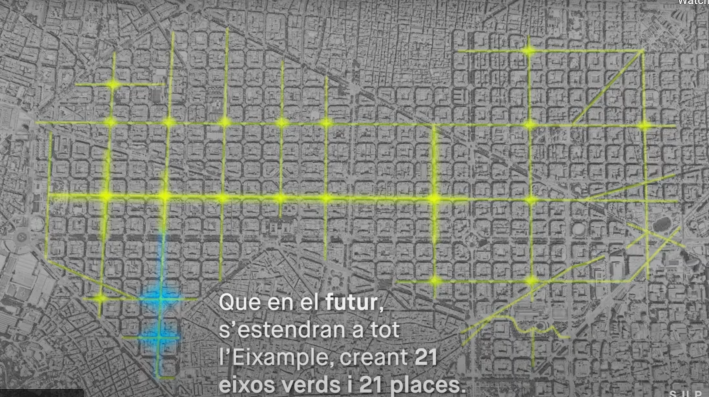
When Barcelona first popularized the superblock concept, many U.S. planners regarded it as a radical new idea that wasn't especially suitable for U.S. cities. (Of course, they're wrong, since suburban subdivisions exist...but we digress). Still, in the age of COVID-19, the prospect of an urban superblock is even less exotic — Montreal deployed nine superblocks as part of its pandemic response this summer, and whether they meant to or not, many American cities have already test-driven a version of the design since our own quarantine orders came down in March.Most of them found that their communities still functioned perfectly well, even if they didn't give every driver easy curbside access to every last inch of their community.
Minneapolis, for instance, created three downtown loop routes with pedestrian and cyclist "enhancements" for socially distanced exercise, but still allowed drivers to cross the routes in order to access destinations within the program's cordon. The result: there were 33 percent more unique pedestrians and cyclists on the roads within the accidental superblocks than there were before the pandemic sent residents into their homes — even as many residents still elected to shelter in place. And that's even without the kind of dedicated attention to things like enhancing access to transit, green space, and essential services that Barcelona built into its program.
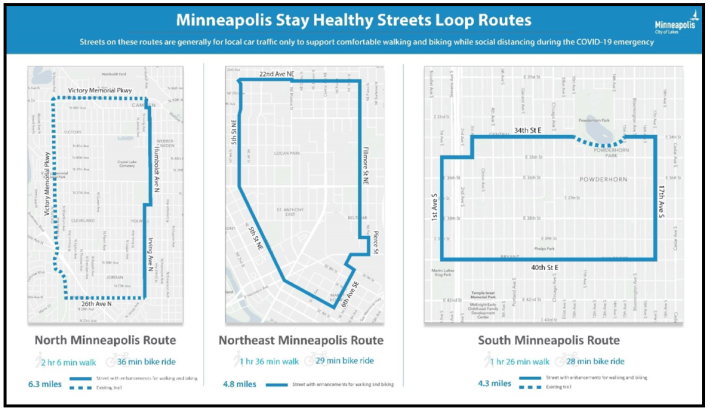
Unlike Minneapolis's Healthy Streets, Barcelona's new car-light zone isn't being positioned as a part of the city's pandemic response, and it's certainly not temporary; the city won't start implementing the changes until 2022, and they'll take an estimated 10 years and $45 million complete. But a superblock can be built far faster and cheaper, without sacrificing the type of meaningful community engagement that proponents of the concept say is crucial to its success — and to keeping residents in place as their neighborhoods improve.
"A strategy like Barcelona’s superblock program can be effective to start to pilot change and this model can be brought to the US — bu it needs to be done carefully though and in places where there are high density and good public transportation options," saidMaki Kawaguchi, director of Gehl New York and San Franisco. "It can’t be simply dropped into an American fabric where there is major dependency on auto-vehicles or not a lot of foot traffic...Neighborhoods that have been historically disinvested need these kind of initiatives to provide more and better public spaces so people can live healthier lifestyles. It’s critical though that these programs include the community members and has a participatory approach."
Barcelona's original superblocks were largely built using the principals of tactical urbanism, a methodology that, despite recent controversy, has strong roots in Latin American social justice movements that sought to meet the challenges of climate change through the public realm without causing displacement. The architects of the original Barcelona program deliberately selected neighborhoods with high concentrations of social housing for the superblock treatment, and worked closely with residents to rapidly redesign their neighborhoods with their needs in mind, implementing "prototype" superblocks quickly and cheaply, and continuously iterating on those designs in response to evolving community needs. There's some evidence that the neighborhoods experienced gentrification-related displacement anyway — but experts say that could have been mitigated if Barcelona built more superblocks so the benefits to walkers weren't so highly concentrated in a handful of areas alone.
"Until now, superblocks in cities have only been established selectively," said Dr. Stefan Seer, who conducted a study into the impacts of superblock programs worldwide. "If there are several superblocks in a city, then the impacts may be spread out somewhat differently."
The Eixample superblock, in one of Barcelona's wealthiest neighborhoods, may help slow the rush to buy real estate in the poorer neighborhoods that were targeted for the improvement earlier — and the city of Barcelona has committed to increasing its investments in social housing citywide as the program expands. U.S. cities, of course, have a far spottier track record of providing guaranteed affordable shelter than European ones, but experts still think there are ways the superblock concept could be deployed here — especially in commercial districts.
"We're in the middle of a great experiment, especially as local governments are looking for ways to support their retail areas and restaurants in the time of COVID," said Lynn Richards, president and CEO of the Congress for the New Urbanism. "Even just when it came to Slow Streets, I found it incredibly surprising how fast all these local governments let their businesses occupy the street space — that's something for which we've been advocating for years, and all of a sudden, boom, in a matter of weeks and months, it happened...Now that we've opened up streets for pedestrians, are municipalities really going to go backwards? No, I think it's here to stay. We may not get to the kind of massive superblocks that Barcelona is doing anytime soon, but maybe smaller commercial districts [could try it]. I do think that at the end of this, we're going to see an increase in imagination."
Some advocates are hopeful that all that imagination might get some real, federal cash put behind it if President-Elect Biden appoints someone visionary to helm the Department of Transportation. The Secretary will have control of a range of discretionary grant programs that could be used for innovative, relatively low-cost transportation projects like superblocks — even if the House and Senate aren't supportive of what seems to many a distinctly European idea.
"If you look at what happened under Obama, one year out, the Partnership for Sustainable Communities was formed, and through that, over three billion dollars for funding and implementation was funneled into some really exciting projects," Richards adds. "And when you look at the problems that the new administration is going to face, from a struggling national economy to struggling local governments, creating walkable urbanism is a powerful tool to overcome those...Whether you call it a "superblock" or not, we need to think about how we can use the public realm to meet these challenges, all while increasing access to opportunity and minimizing displacement."
Kea Wilson has more than a dozen years experience as a writer telling emotional, urgent and actionable stories that motivate average Americans to get involved in making their cities better places. She is also a novelist, cyclist, and affordable housing advocate. She previously worked at Strong Towns, and currently lives in St. Louis, MO. Kea can be reached at kea@streetsblog.org or on Twitter @streetsblogkea. Please reach out to her with tips and submissions.
Read More:
Stay in touch
Sign up for our free newsletter
More from Streetsblog USA
Talking Headways Podcast: Highway Fighting in Texas
Jeff Wood talks to Megan Kimble about an amazing footnote to the creation of the Interstate Highway system.
The Dawn of the ‘Non-Driver’ Movement: A Conversation with Anna Zivarts
"At the end of the day, there are going to be folks who still can't drive and can't afford to drive — and there are still going to be a lot of us."
Thursday’s Headlines Fight a Suburban War
The way Politico lays out the battle lines, it's not just drivers versus transit users, but urban transit users versus suburban ones.
California Leaders Celebrate Ten Years of Climate Action
Air Resources Board report highlights progress funded by the California Cap-and-Trade Program.
How Car-Centric Cities Make Caring For Families Stressful — Particularly For Women
Women do a disproportionate share of the care-related travel their households rely on — and car-focused planning isn't making matters easier.


